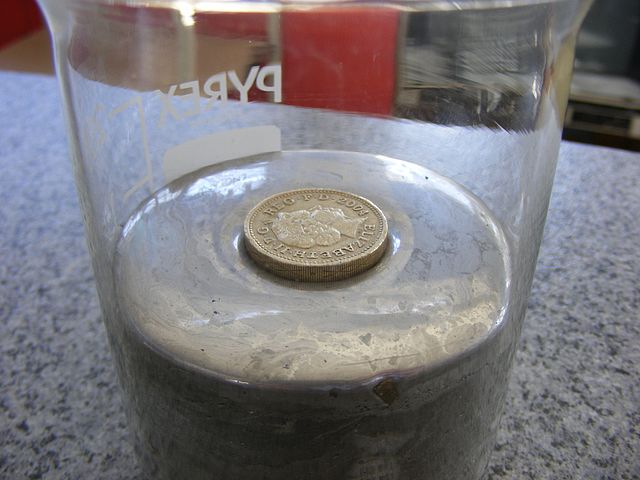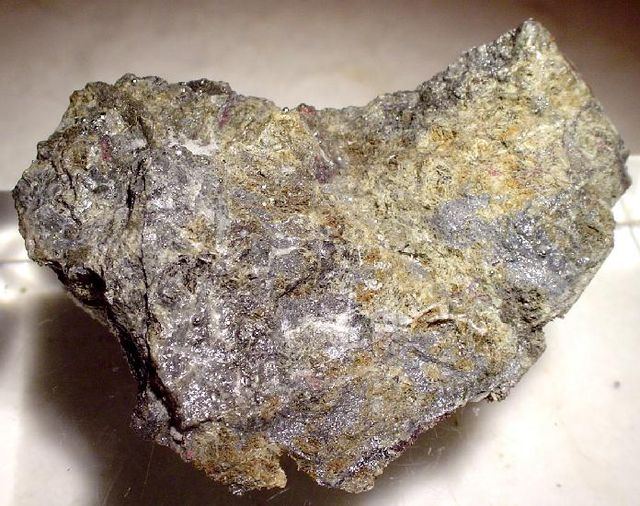Calomel is a mercury chloride mineral with formula Hg2Cl2 (see mercury(I) chloride). It was used as a medicine from the 16th to early 20th century, despite frequently causing mercury poisoning in patients.
Amber calomel crystals and bright yellow terlinguaite on gossan matrix, 3 mm. across
Calomel was a common medicine from the 16th to 20th century, despite causing mercury poisoning.
Packets of calomel.
An advertisement from 1896 for a medicine containing calomel.
Mercury is a chemical element; it has symbol Hg and atomic number 80. It is also known as quicksilver and was formerly named hydrargyrum from the Greek words hydor (water) and argyros (silver). A heavy, silvery d-block element, mercury is the only metallic element that is known to be liquid at standard temperature and pressure; the only other element that is liquid under these conditions is the halogen bromine, though metals such as caesium, gallium, and rubidium melt just above room temperature.
Mercury (element)
An old pound coin (density ~7.6 g/cm3) floats on mercury due to the combination of the buoyant force and surface tension.
Mercury-discharge spectral calibration lamp
Native mercury with cinnabar, Socrates mine, Sonoma County, California. Cinnabar sometimes alters to native mercury in the oxidized zone of mercury deposits.








